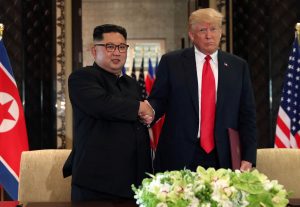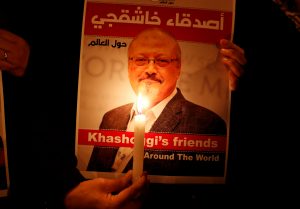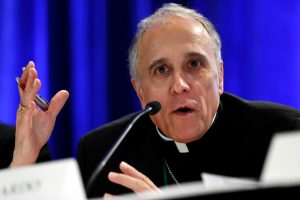
By Lucia Mutikani
WASHINGTON (Reuters) – U.S. retail sales rebounded sharply in October as purchases of motor vehicles and building materials surged, likely driven by recovery efforts in areas devastated by Hurricane Florence.
The report on Thursday from the Commerce Department also showed broad gains in sales ahead of the holiday shopping season, which bodes well for consumer spending and the overall economy as the fourth quarter gets underway.
Sales could also get a boost from declining oil prices, which are expected to lead to cheaper gasoline.
“The consumer has the wind at their backs and with gasoline prices falling at the pump, we expect even more spending in the next couple of months,” said Chris Rupkey, chief economist at MUFG in New York.
Retail sales increased 0.8 percent last month. But data for September was revised down to show sales slipping 0.1 percent instead of rising 0.1 percent. August sales were also weaker than previously thought.
Economists polled by Reuters had forecast retail sales increasing 0.5 percent in October. Sales rose 4.6 percent from a year ago.
Excluding automobiles, gasoline, building materials and food services, retail sales increased 0.3 percent last month. These so-called core retail sales correspond most closely with the consumer spending component of gross domestic product.
Data for September was revised lower to show core retail sales rising 0.3 percent instead of gaining 0.5 percent as previously reported. August core retail sales were also revised down to show them falling 0.2 percent instead of being unchanged.
While that suggests some loss of momentum in consumer spending, which accounts for more than two-thirds of U.S. economic activity, consumption remains underpinned by a strong labor market, characterized by a 3.7 percent unemployment rate.
The lowest unemployment rate in nearly 49 years is boosting wages, with annual wage growth recording its biggest increase in 9-1/2 years in October. Jobs market strength was underscored by a separate report from the Labor Department on Thursday showing a marginal increase in the number of Americans filing for unemployment benefits last week.
“Solid job growth and wage increases are the main sources of support for consumer spending and so far, so good,” said Jennifer Lee, a senior economist at BMO Capital Markets in Toronto.
Strong domestic demand and a tightening labor market support views that the Federal Reserve will increase interest rates in December for the fourth time this year. The U.S. central bank last Thursday kept rates unchanged, but noted that data “indicates that the labor market has continued to strengthen and that economic activity has been rising at a strong rate.”
The dollar was trading higher against a basket of currencies after Thursday’s data, while U.S. Treasury yields fell.
BROAD GAINS
The trend in retail sales, if sustained, could keep the economy on a solid growth path even as business investment is slowing, the trade deficit is expected to deteriorate further and the housing market continues to weaken.
The government reported last month that consumer spending expanded at its fastest pace in nearly four years in the third quarter. Given the downward revisions to core retail sales in August and September, the third-quarter consumer spending estimate is likely to be lowered when the government publishes its second estimate of gross domestic product later this month.
While the Commerce Department said it could not isolate the impact of Hurricane Florence, which lashed North and South Carolina in mid-September, on the retail sales, the storm probably boosted purchases of automobiles and building materials last month.
Auto sales jumped 1.1 percent last month likely as residents in areas affected by Florence replaced damaged cars. Auto sales fell 0.1 percent in September. Sales at building material stores surged 1.0 percent in October.
There were also increases in sales at clothing stores, online retailers and service stations last month. Americans also spent more on hobbies and at bookstores, while cutting back on furniture purchases.
But spending at restaurants and bars slipped 0.2 percent, likely hurt by Hurricane Michael, which soaked the Florida Panhandle in mid-October. Sales at restaurants and bars dropped 1.5 percent in September.
Other data on Thursday offered a mixed picture of the manufacturing sector in early November. The New York Fed said its Empire State general business conditions index rose to a reading of 23.3 this month from 21.1 in October.
A slight moderation in the new orders index was offset by strong increases in labor market measures.
Separately, a survey from the Philadelphia Fed showed a slowing in factory activity in the mid-Atlantic region this month, with its current general activity index tumbling to a reading of 12.9 from 22.2 in October amid a sharp slowdown in new orders.
Firms, however, remained upbeat about business conditions over the next six months. There was also a strong improvement in capital expenditure plans.
(Reporting by Lucia Mutikani; Editing by Andrea Ricci)










